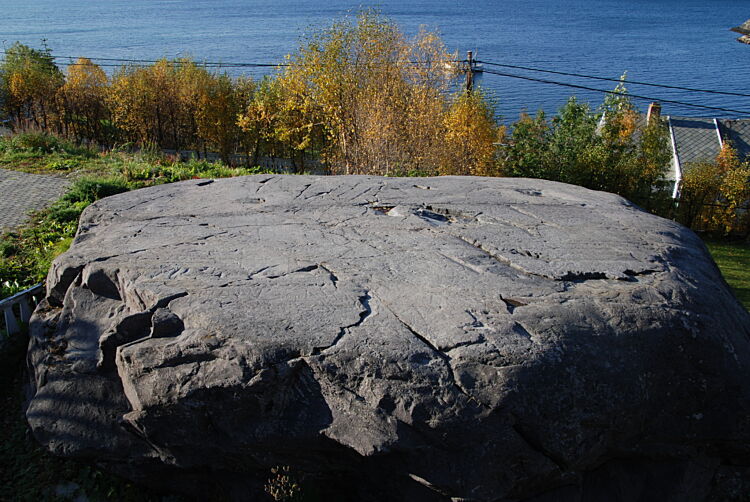Storsteinen
Storsteinen (literally "the Big Rock") is one of the five rock art areas in Alta which is included on UNESCO’s World Heritage List. It is situated in two private gardens in Bossekop and is not open to the public.

The carvings were discovered by Åge Nilsen, who had been called in to blast this huge stone. When he examined the surface, he noticed that some figures that had been carved into it, and this saved the stone from being blown to bits. The discovery of the carvings on Storsteinen was the first of many finds in Alta during the 1970s. Not long after Storsteinen was found, the first rock carvings came to light in Hjemmeluft.
Storsteinen has steep sides and a top surface of just under 50 sq.m. The sloping surface is 21-22 metres above sea level. Several hundred carvings had been chiselled on top of each other over a long period of time. The figures date from the three oldest phases (i.e. c.7000-4000 years ago) and mainly depict reindeer, elk and people, though there are also other motifs. It can be difficult to interpret some of the figures, partly because they are carved on top of each other, and partly because the surface is seriously eroded.
Storsteinen is unusual in that over several thousand years people have come back to carve new figures on the same rock surface, which is why there are so many figures on top of each other. In Alta, people usually made use of the smooth rock surfaces by the shore. As the land rose from the sea due to land upheaval, new rock surfaces were used. Storsteinen lies between the other large rock carving areas in Alta, with Hjemmeluft and Kåfjord on one side and Amtmannsnes on the other. Hjemmeluft and Kåfjord were the most important areas in the two oldest phases. However, in the third phase activity at these sites practically ceased, and Amtmannnsnes became the new major site for rock carving. But throughout the changing focus of all these phases (1-3), Storsteinen has retained its role as a place for rituals. In phases 4 and 5, activities resumed again in Hjemmeluft, and no more carvings were ever made in Kåfjord, on Storsteinen or at Amtmannsnes.